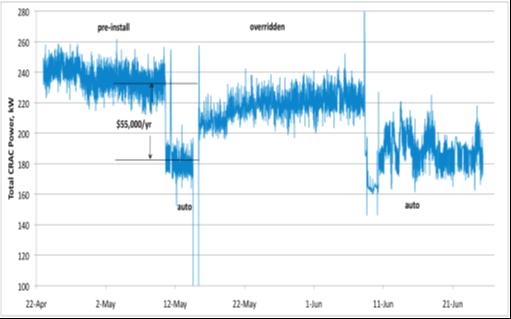It’s getting better all the time.
Despite our relentless drive to consume more and more data, driven by ever more interesting and arguably useful multimedia applications, energy consumption of data centers is growing slower than would be predicted from historical trends.
For that success, we should be proud, while remaining focused on even greater efficiency innovation.
Large companies have stepped up with powerful sustainability initiatives which impact energy use throughout their enterprise. We’ve gotten better at leveraging natural resources, like outside air to moderate data center temperatures. We are using denser, smarter racks for space and other efficiencies. Data center cooling units are built with variable speed devices improving energy efficiency machine-by-machine. Utility companies are increasingly offering sophisticated and results-generating incentives to jump-start efficiency programs.
These and other contributing factors are making a difference, clearly proven in Jonathan Koomey’s Growth in Data Center Electricity Use 2011 report which showed a flattening, versus a lockstep correlation of energy usage to data center growth. Koomey and other analyst growth estimates projected a doubling of world data center energy usage from 2005 to 2010. Actual growth rates were closer to 56%, a reduction that Koomey attributes both to fewer than expected server installations – and a reduced use of electricity per server.
I am proud of what our industry – and what our company – has achieved. Consider some of this year’s highlights.
The New York Times raised the profile – and the ire – of the data center industry calling attention to the massive energy consumed by, well, consumers. Data center facilities and analysts alike responded with criticism, saying that the article ignored the many and significant sustainability and energy use reductions now actively in use.
Vigilent received an astounding 8 industry awards this year – recognizing our technology innovation, business success and workplace values. I’m very proud of the fact that several of these awards were presented by or achieved in partnership with our customers. For example, Vigilent and NTT won the prestigious Uptime GEIT 2012 award in the Facility Product Deployment Category. NTT Facilities with NTT Communications received the 2012 Green Grid Grand Prix award, recognizing NTT’s innovative efforts in raising the energy efficient levels of Japan by using Vigilent and contributing DCIM tools. And Verizon, in recognition of our support for their commitment to continuing quality and service, presented us with their Supplier Recognition award in the green and sustainability category.
We moved strongly into Japanese and Canadian markets with the help of NTT Facilities and Telus, both of whom made strategic investments in Vigilent following highly successful deployments. Premiere Silicon Valley venture firm Accel Partners became an investor early in the year.
We launched Version 5 of our intelligent energy management system adding enhanced cooling system control with Intelligent Analytics-driven trending and visualization, along with a new alarm and notification product to further reduce downtime risk.
And, perhaps most satisfyingly of all, we helped our customers avert more than a few data center failures through real-time monitoring and intercession, along with early notification of possible issues.
This year, we will reduce energy consumption by more than 72 million kWh in the US alone. And this figure grows with each new deployment. We do this profitably, and with direct contribution to our customer’s bottom line as well through energy cost savings.
Things are getting better. And we’re just getting started.


